“In the midst of every crisis, lies great opportunity.” said Albert Einstein.
2020 has been a weird year. We’ve experienced the fastest bear market, with the US stock market crashing 35% in just 1 month. We’ve see oil futures crash to -$37 a barrel.
On the other hand, the US stock market recovered from the brutal bear market in a record of 5 months! Stocks such as Zoom and Snap defied gravity. Their share price rocketed by 328% and 338%, respectively. It was a marvelous time for swing traders who took the opportunities in this global health crisis.
You want to join this group of highly profitable traders but you don’t know how much you need to start swing trading.
There’re only 4 main considerations to determine how much you need to start swing trading. Let’s explore!
#1 Stop Loss Amount

Placing a good stop loss is one of ingredients in becoming a successful trader. Why?
Humans are emotional creatures. You and I don’t have nerves of steel and the discipline to sell a failing stock that we own. This is where a pre-determined stop loss level comes to the rescue.
Where should you place your stop loss level at? How do you determine that that’s a good place to put your stop loss level at?
You can use the ATR (Average True Range) indicator. The ATR indicator is free and available on most charting platforms, including the trading platform of your broker’s.
This indicator is also good at preventing you from getting out of your trades prematurely.
Knowing where to place your stop loss level at, it is time to calculate the absolute amount of money your stop loss is away from your entry price.
YUM has been exhibiting nice swing points lately. You believe that the downswing in YUM has ended and the upswing has started. Hence, you would want to buy it at about $105.90.
Following the 2x ATR rule, you place your stop loss level 2x the present ATR (2 x 1.95 = 3.9). Your stop loss amount is $3.90. Your stop loss level will be at $102 ($105.90 – $3.90) as shown by the red box in the chart below.
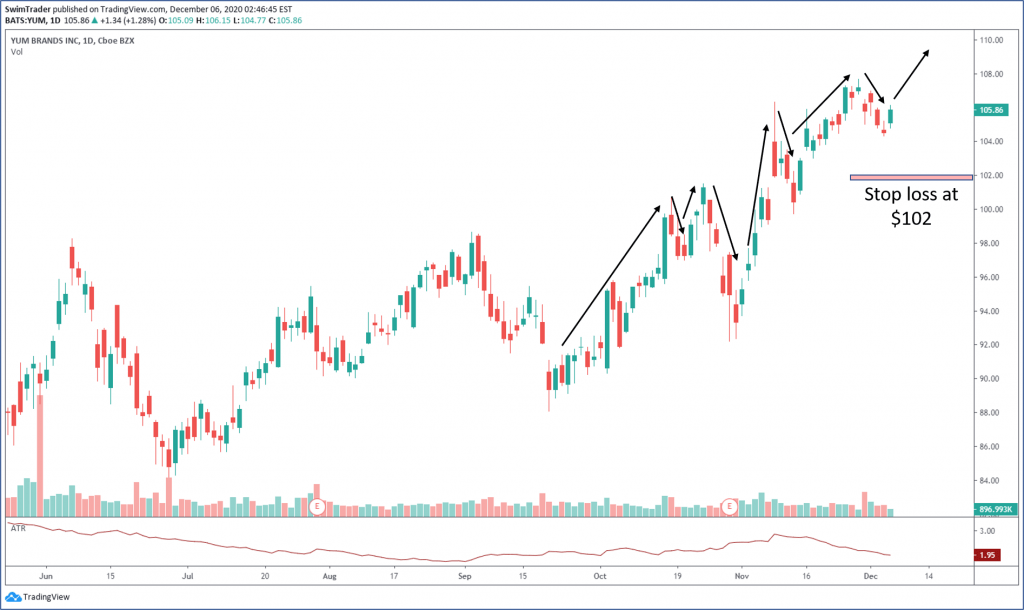
I’ll use YUM as the stock of choice throughout this article for easy understanding.
#2 Position Sizing
Position sizing is a formula to help you know how many units you should be buying of any instrument (ie. stocks, currencies, indices, commodities, ETFs, and more). We shall focus on stocks.

Where,
Position Sizing is the number of shares you can afford to go Long or Short with the level of risk you can stomach;
% Risk is the percentage of risk you are willing to take for this particular trade;
Allocated Trading Capital is the amount of money you want to allocate to this trade;
Stop Loss Amount is the dollar amount per share that you are willing to lose.
You are thinking if there is an optimal percentage of risk for trading. Though this depends on your risk appetite, I strongly encourage you to keep it at 2% or less. This is because the more you lose, the higher in percentage terms you’ll need to recover from your initial trading account size.
Imagine risking 10% and losing $1,000 on your $10,000 trading account. You’ll need to make 11.11% to get back to even.
Worse still if you risk and lose 50% (or $5,000). You’ll need to make 100% as shown in the table below.
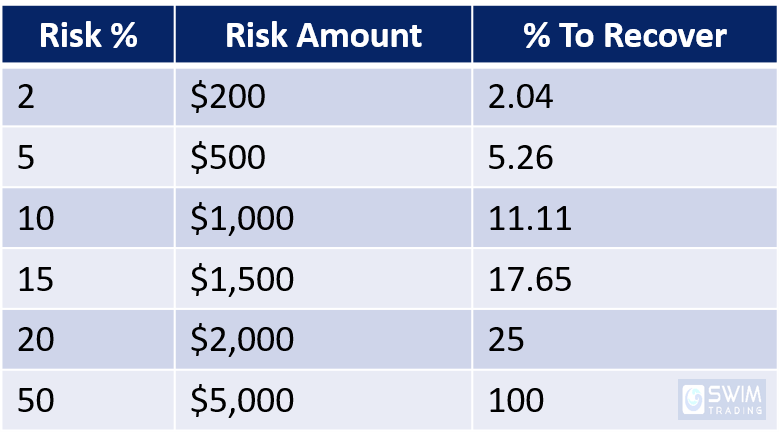
Allocated Trading Capital is the amount of your trading capital that you wish to budget for this stock. You don’t have to budget your entire trading account.
You may only want to allocate $5,000 out of your $10,000 trading capital for YUM and that’s fine.
If you have other ongoing trades, your Allocated Trading Capital should be equal to or less than your account balance.
As for Stop Loss Amount, it is $3.90 (referring to the example of YUM in the 1st point).
Using the Position Sizing formula, input the numbers into the Position Sizing calculator which I have done up for you and viola! You know how many shares to buy!
#3 Leverage

Some brokers provide leverage. Leverage is a double edged sword. You can profit more than others quickly, and lose more than your initial trading capital quickly. Does this mean that you should totally stay away from leverage? The short answer is No.
Read my recent article to find out which brokers provide leverage and those I recommend. You’ll find a cheat sheet too.
Most indices, stocks, and ETFs can be leveraged by 5 to 20x. This means that you’ll just need to pay anywhere between 1/20 to 1/5 of the total amount for indices, stocks, and ETFs. Eg. you buy a 100 shares of a $100 stock. Without leverage, you’ll need to pay the full amount of $10,000.
With a leverage of 10x, you’ll just need to pay $1,000 to own the same number of shares.
For brokers which provide leverage, how can you utilize less leverage in your trades? Here’s how:
Since the level of leverage is 10x for most shares, I will use 10x to be the default leverage level for stocks.
As we wish to trade for many years, it is important to trade conservatively. Using half of the leverage given to you is one way to trade conservatively. Instead of keying in “10” into the leverage section of the Position Sizing calculator, key in “5”.
In this example, I have keyed in $5,000 as my Account Balance.
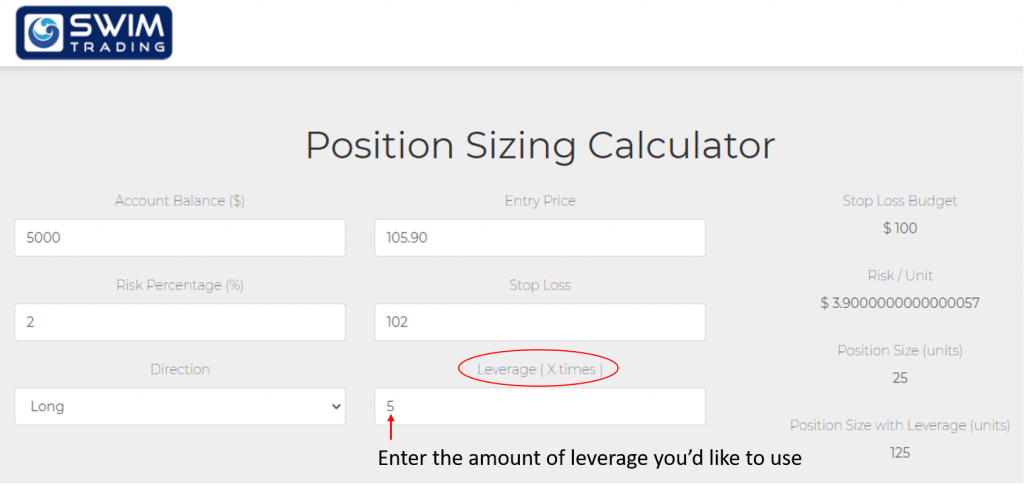
And you’ll instantly get your result on the number of shares you should buy. See the image below.
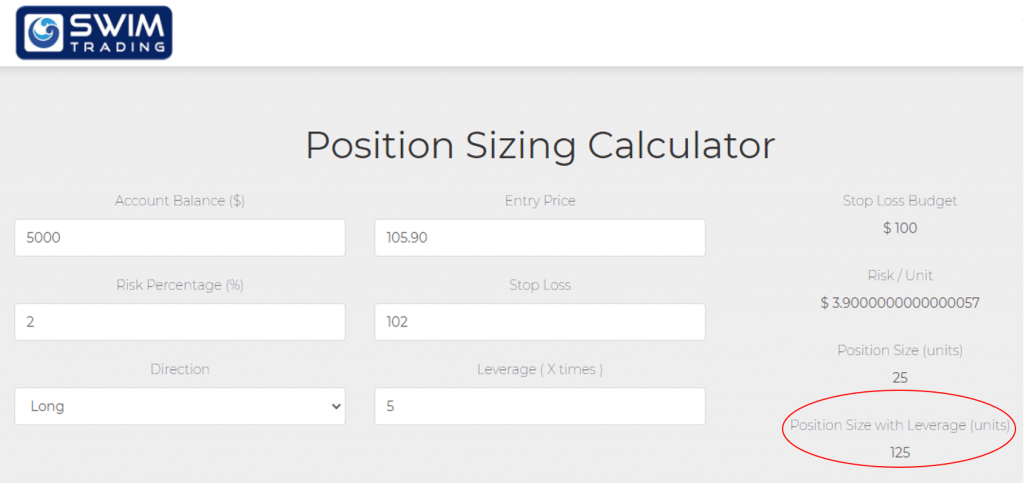
You can buy 125 shares of YUM!
#4 Price Of Stock
The price of stocks that you want to trade will also determine the amount you need to have in your trading account. Let’s say you want to buy huge technology companies such as Amazon and Google.

The share price of Amazon is $3162.58. Your stop loss amount would be $156.88 per share. Your 2x ATR stop loss level would be at $3005.70.
With $10,000, risking 2%, and a 5x leverage, you can only buy 5 shares of Amazon.
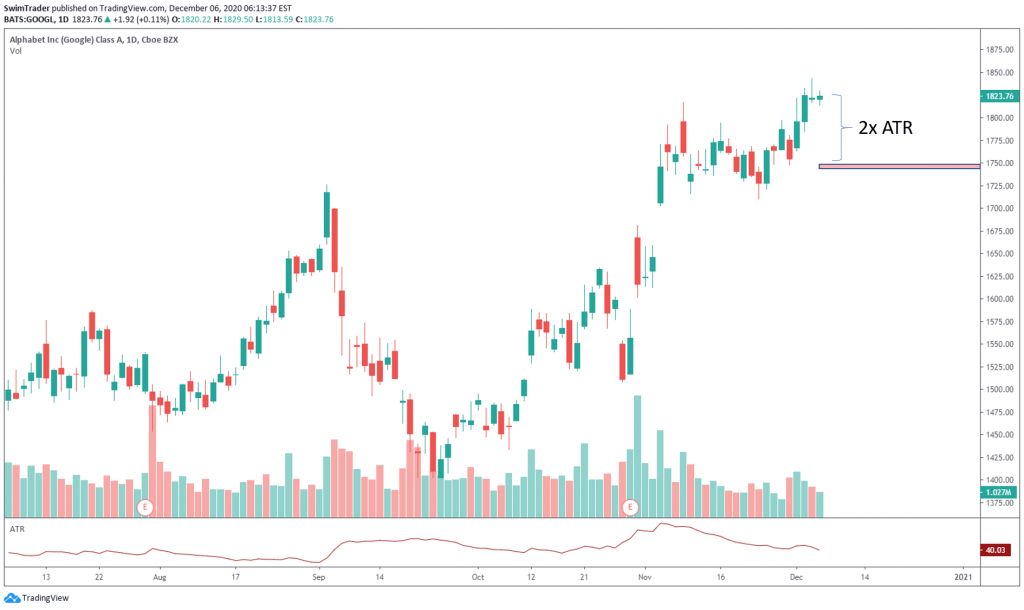
The share price of Google is $1823.76. Your stop loss amount would be $80.06 per share. Your 2x ATR stop loss level would be at $1743.70.
With $10,000, risking 2%, and a 5x leverage, you can only buy 10 shares of Google.
Therefore, you’ll need much more than $10,000 to start off (even with leverage).
With a $10,000 account, you should be looking for stocks that are priced below $200. There are many stocks good and strong stocks which costs below $200 such as Sea Limited and 3M.
Here’s What You’ve Learnt Today
So how much do you need to start swing trading?
$6,000 will be good for a leveraged trading account for stocks that are cheaper than $120.
$20,000 will be good for a trading account without leverage for stocks that are cheaper than $120.
That’s a guideline. Please do your Math. The good news is that you can make use of the Position Sizing calculator that I’ve done up for you.
Here are the 4 main considerations to knowing how much money you need to start swing trading:
#1 Stop Loss Amount
#2 Position Sizing
#3 Leverage
#4 Price Of Stock
Here’s What You Can Do To Improve Your Trading Right Now:
#1 Register for our market outlook webinars by clicking here
#2 Join us in our Facebook Group as we can discuss the various ways of applying this by clicking here
#3 Never miss another market update; get it delivered to you via Telegram by clicking here
#4 Grab a front row seat and discover how you can expand your trading arsenal in our FREE courses (for a limited time only) by clicking here
Trade safe!

